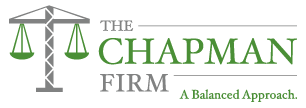Construction and the Law in Texas
Just before my publication deadline for this article (Dec. 17), Texas Speaker of the House Joe Straus announced that the legislative priorities for the upcoming session would be education, transportation, water, jobs and budget transparency. Each of those five priorities directly impacts our industry. Transportation and water are our industry. But, given the fact that transportation and water are two of the big picture issues for the upcoming session, very few bills or resolutions have been filed as of the drop date for this article dealing directly with those issues.
Of the more than 300 pre-filed bills, only a handful of them deal with transportation, water, or infrastructure. However, the few that are filed concern the big issue of funding to enable investment in infrastructure. Also, at least one funding idea is currently being pushed by Senate Transportation Committee Chairman Robert Nichols and that idea is not the subject of a currently filed bill or resolution.
Of the bills that have been pre-filed, House Bill 227 deals with the suggestion by Lieutenant Governor David Dewhurst that the legislature allocate $1 billion from the Rainy Day fund to establish an infrastructure bank to support funding for water infrastructure. The bill reads as follows:
The amount of $1 billion is appropriated from the economic stabilization fund to the comptroller for the purpose of depositing that amount to the credit of the water infrastructure fund as money available for use by the Texas Water Development Board of the purposes of the water infrastructure fund during the state fiscal biennium beginning September 1, 2013.
Clearly, the funding of a $1 billion infrastructure bank would have a significant impact on the water infrastructure needs throughout Texas. While this number is significant, it falls well below the overall projected needs for water infrastructure as published by the Texas Water Development Board of $53 billion to address the 2011 regional water plans for the next 50 years. For the construction industry, however, the establishment of this infrastructure bank would allow for the development and construction of significant projects that are badly needed to support Texas’ growth and reinvigorate a construction industry that has been hit hard by the Great Recession and the slow recovery.
Shifting more specifically to the transportation side of the 2013 Legislature’s focus, a House bill has been pre-filed that will amend chapter 222 of the transportation code. The amendment prevents the use of funds in the state highway fund to pay for the Department of Public Safety’s (DPS) costs for policing and administering the highway system, including laws related to traffic and safety on public roads.
This bill reflects an attempt by the Legislature to address the needs of transportation spending on roadway development and maintenance. In the past, the funds in the highway funds could be used to pay for DPS policing and administration. While these services are necessary for safe use of our roadways, there are serious efforts underway to find funding for transportation without raising taxes. This bill reflects those efforts. The bill also changes the wording in the section allowing spending from the state’s Infrastructure Bank. The bill changes the language in that section to require funds from the Bank to only be spent in ways allowed by section 222.001 of the code. Therefore, funds in the Infrastructure Bank could be used to improve the state highway system, to mitigate environmental effects of roadway construction, and to improve the state highway system.
The final funding item that has been discussed with regularity and seems to have measurable support, as indicated by reactions to the same proposal in 2011, comes from Nichols. The Senator is focusing on the transportation needs of the state and has advocated a sustainable source for funding into the future. The current gas tax and proposal for a travel tax based on miles driven, according to Nichols and others, are unsustainable because the vehicles we drive are getting more efficient and the number of gallons consumed is not increasing at the same rate as the demand and need for infrastructure. Further, the population and demographic trends indicate that people are driving fewer miles.
However, as Nichols points out, people are moving to Texas at great rates and the population of the state continues to grow. Population growth drives demand for vehicles. The number of vehicles sold in Texas will increase along with the population. The state currently collects 6.25 percent sales tax on all vehicle sales. However, much of the money raised from that tax feeds the state’s general revenue fund. Nichols has advocated moving the money generated by vehicle sales taxes from general revenue into the highway fund for dedicated transportation spending.
In order to prevent significant budgetary problems, Nichols is calling for a gradual dedication of the funds by 20 percent each biennium so that the full effect on general revenue is absorbed over 10 years. According to his projections, the revenue generated by the tax is expected to be $10 billion in the next decade. Adding $2 billion to transportation spending each biennium will enable significant investment in both new projects and maintenance of existing roadways. And, while it may not be enough to fully address all the transportation needs, it should be a good start.
– As seen in the January 2013 Issue of Texas Contractor.
